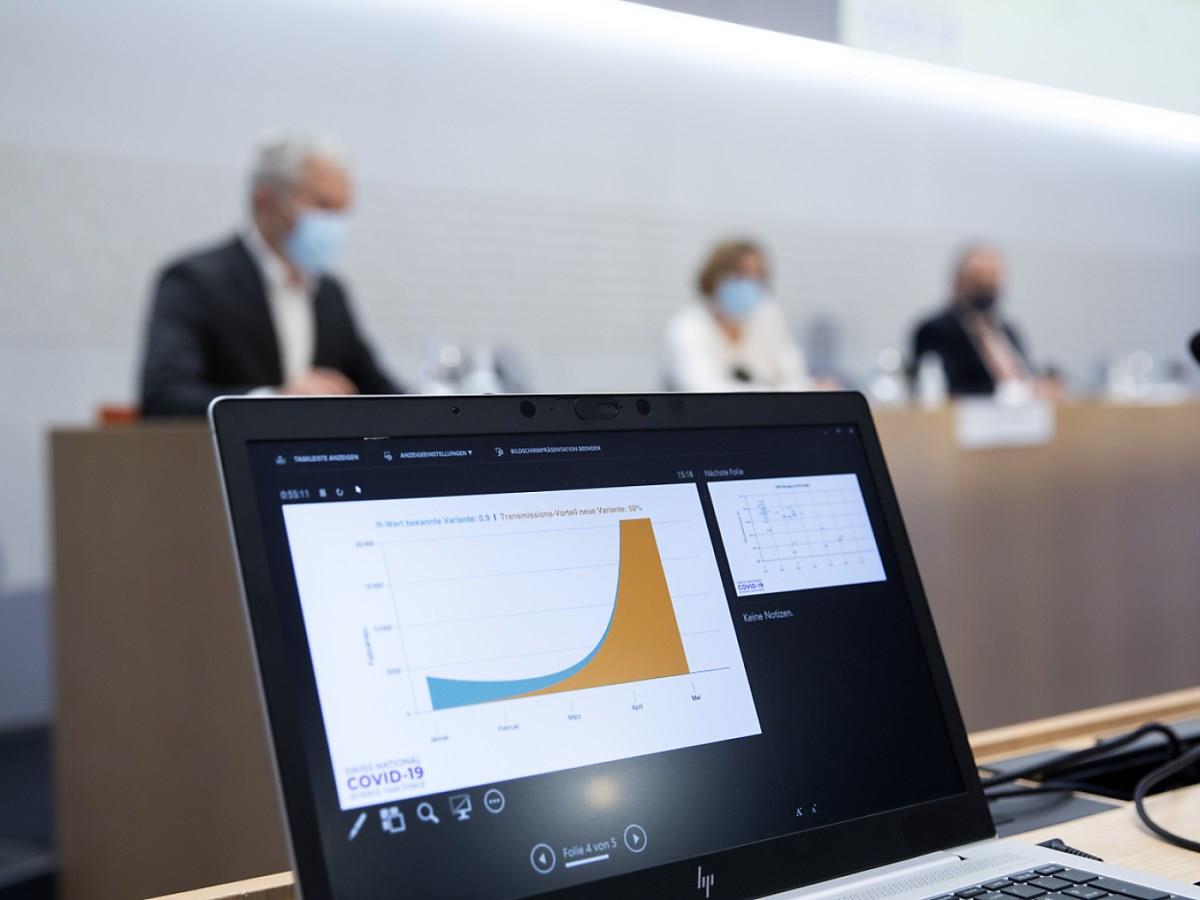
New Swiss Model Improves Epidemic Predictions
- Deutsch de Neues Schweizer Modell sagt Epidemien besser voraus Original Read more: Neues Schweizer Modell sagt Epidemien besser vorau
+ Get the most important news from Switzerland in your inbox
Using data from the Covid pandemic in Switzerland and Scotland, researchers at the Swiss Federal Laboratories for Materials Science and Technology (Empa) developed a model that can predict much more accurately when peaks in the infection rate were reached, the institute announced on Thursday.
The reproduction number R describes how many people an infected person infects on average. If R is greater than one, the number of cases increases exponentially; if R is less than one, it decreases. However, this figure is highly simplified. In reality, according to the researchers, not every person infects the same number of other people.
More More Excess mortality rate post-Covid could persist until 2033This content was published on Sep 16, 2024 According to a report by reinsurer Swiss Re, many countries are still experiencing excess mortality following the Covid-19 pandemic.
Read more: Excess mortality rate post-Covid could persist until 203Superspreaders with many contacts infect a disproportionately high number of people, while others infect hardly anyone.
Society divided into groupsThis is taken into account by using a reproduction matrix. The researchers at Empa divided society into groups according to age. People between the ages of 10 and 25 have the most contacts.
According to the researchers, the R-value can predict the incidence of infection at the beginning of a pandemic. However, the peak of an epidemic or pandemic is usually lower than model calculations with the R-value would suggest.
Relatively few superspreadersThe reason: the number of superspreaders in society is relatively small. If they are all infected, the spread of the disease slows down. Conventional models based on the reproduction number R do not take this slowdown into account.
The research team led by Ivan Lunati presented the new model to the scientific community in the Journal of the Royal Society Interface. While it works well for relatively small countries such as Switzerland and Scotland, it may be more difficult for large countries, the researchers admit. This is because it assumes that both the infections and the superspreaders are evenly distributed throughout the country. The model would need to take into account the geographical distribution of the population and contacts between the regions in order to be more accurate for large countries.
Translated from German by DeepL/jdp

Legal Disclaimer:
MENAFN provides the information “as is” without warranty of any kind. We do not accept any responsibility or liability for the accuracy, content, images, videos, licenses, completeness, legality, or reliability of the information contained in this article. If you have any complaints or copyright issues related to this article, kindly contact the provider above.






















Comments
No comment